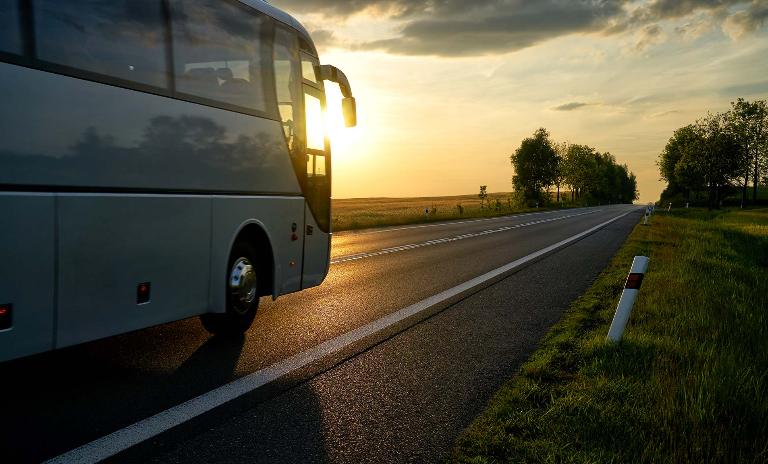

Autonomous driving gains traction in rural areas
"We need a political debate about the future of public transit in rural areas."
Gunnar Heipp discusses public transport options for people on the land
What is the solution to providing reliable transport options to people living in sparsely populated areas? While there are a wide range of options and services available in some instances, what is lacking is a global perspective, says Gunnar Heipp. At the time of the interview he was the strategic planning director from Munich City Utilities. We put seven questions to him exploring the topic of mobility.

- Roland Berger: As an expert working inside the industry, what do you see as the key challenge facing public transportation in rural areas?
Gunnar Heipp: There are many different challenges: low-density populations, the distance from built-up areas and railroad stations, shrinking populations, an aging society, decentralized schools and retail outlets… the list goes on and on. The result is longer travel distances in rural areas than urban areas, without the critical mass required to create new solutions. On top of that, municipal budgets are being cut on an almost continual basis. In Germany, public transit in rural areas is heavily subsidized by regional authorities, sometimes by as much as 80-90 percent. These subsidies mainly target school children, which often means that timetables are reduced to morning and late afternoon services. That leaves the rest of the population dependent on their own vehicles for most of their mobility needs. - Do you see any possible solutions? What options are currently under discussion?
Solutions tend to vary depending on local priorities and financial resources. Most local authorities currently maintain a minimum bus service, even at great cost, for the morning and afternoon peak hours, leaving the rest of the day and evening with mostly no service at all. At the same time we are beginning to see discussions about on-demand shuttles that operate as and when customers call for them. Some regions have developed apps to help citizens use whatever public transit still exists. Ride-pooling solutions between members of the public are increasingly popular. - So there is cause for optimism?
Well, the problem is that these are piecemeal efforts – small-scale, fragmented discussions and projects. A global perspective is lacking. We need a political debate about the future of public transit in rural areas. What are the public's expectations? What solutions are available? Are we really serious about creating services for all, or simply resigned to further cutbacks? - What about autonomous vehicles? Would they improve the situation? To what extent do local authorities see them as a potential solution?
The reason I am excited about autonomous vehicles is that they could realistically form an important part of the solution. Managed fleets of shared autonomous vehicles – once we have overcome the technical difficulties – would be an enormous help in rural areas. They would cut operating costs while improving service quality. In addition, they could be tailored to customer needs in terms of timetables and destinations. Ride-sharing is a first step in this direction, and we see how popular that is. Of course, autonomous vehicles are not with us yet. But we are beginning to see local areas allocating funds to research and development activities related to them. - Activities such as?
Most activity is currently taking place in large urban areas. In Munich, for example, we are discussing the launch of a major project together with industry partners and universities to establish a common vision for mobility. If realized, the project will cover such issues as the role of autonomous driving in future mobility, creating a robust legal and market framework, piloting on-demand services and public acceptance for driverless vehicles. But developing such projects is highly complex. - Where does the complexity stem from?
Well, it's because we are talking about an area that does not yet exist – an area where we do not yet know the full implications, or how to measure them. Autonomous technology presents us with many challenges. Just think of the infrastructure issues, for instance. This is where rural areas represent a great place for trials: The complexity is lower and you can run your pilot and learn from the results before bringing autonomous driving to urban contexts. Such projects are actually happening at the moment, but because they are taking place in rural areas they are less visible, making them less impactful for cities and the big car manufacturers. - Should the state get involved?
Absolutely. This is clearly an issue for European governments – certainly in Germany and even more so in countries such as Italy, France, Spain and in Scandinavia, where population densities outside large cities are even lower than in Germany. Both local and federal governments have a role to play in shaping the future, whether it is through creating a suitable regulatory framework, providing or facilitating financing, or driving development efforts. The work must be focused and goal-driven, not technology-driven. Even where it is clear that projects will ultimately deliver lower costs and greater efficiency, companies require major support and investment.
Further reading







